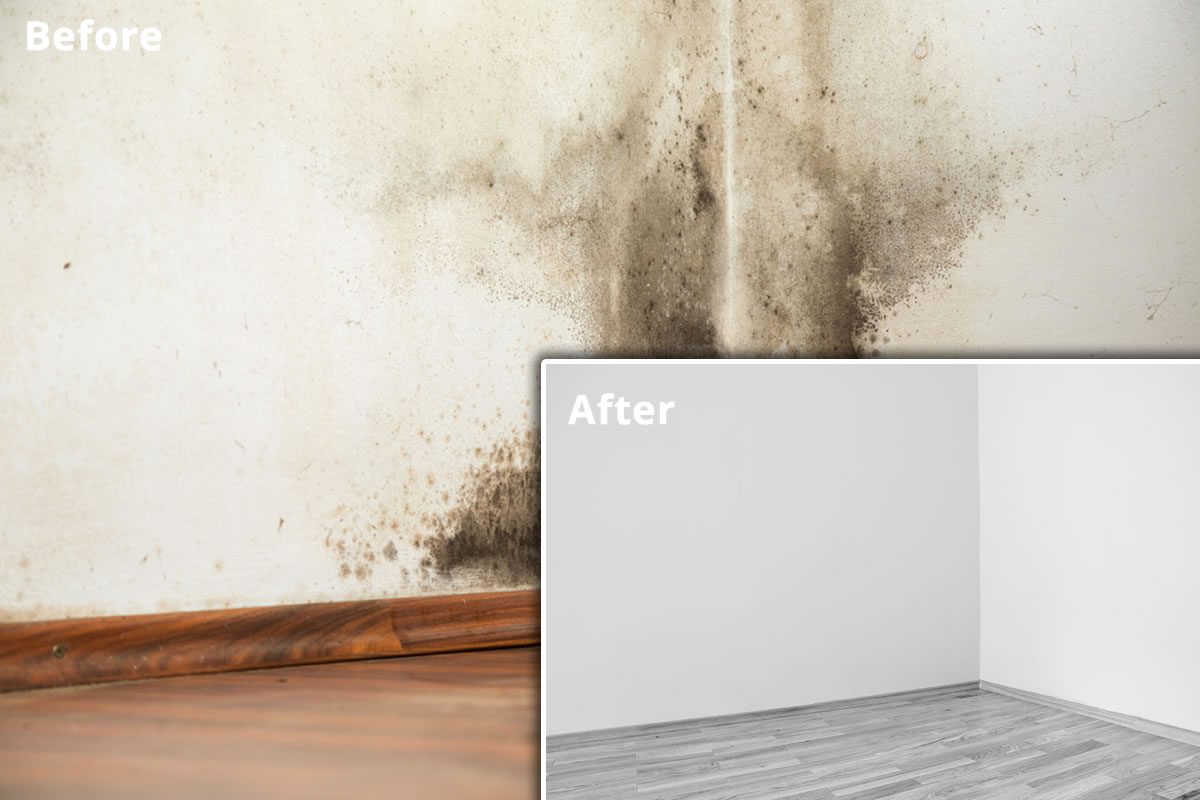What is concrete damp?
Concrete’s porous nature means that water from under your home can seep up through your concrete floor, making it damp. This can cause issues with mold and mildew, especially if you have carpet or furniture on top of the concrete. Basements and garages – the typical rooms with concrete floors – also suffer from poor air circulation, giving the moisture nowhere to go once it seeps through the floor. Sealing the concrete can help eliminate the dampness on your floor.
Why concrete will damp?
There are 7 different causes of concrete damping. We must have to know about below issues for our life as well as healthy & durable construction.
1. How moisture gets into concrete?
Every slab of concrete has moisture and will always have moisture. So you’re never going to achieve, nor would you want, 100 percent dry concrete. What you’re looking for is moisture content that’s at an acceptable level to accept the flooring finish you are going to apply.
Moisture sources for concrete are both internal and external. The internal source of moisture is the water mixed with cement that created the concrete. Despite advances in concrete science, the ratio of water to cement in your batch of concrete remains one of the most influential factors as to how long a concrete slab needs to cure and dry. External sources of concrete moisture can also be substantial and include such things as rainwater, poor plumbing, poor drainage below or at the sides of the slab, and even the humidity in the air.
Whatever the source, once the concrete slab is poured and cured, it needs enough time for the excess moisture within it to evaporate. If the flooring finish is applied while the concrete retains excess moisture, that’s when you can expect flooring adhesive failures, efflorescence, or other types of moisture-related damage.
2. How moisture moves through concrete?
During the drying process, the concrete batch water, cement, aggregate, and other admixtures create tiny pathways within called capillaries. Once cured, the excess water in the slab moves through these capillaries to release the moisture. Since most concrete floors have a vapor retarder below them, this moisture must move upwards in order to escape.
The significant movement of water within the slab means that the moisture content will vary by depth. Generally, the surface of the slab is drier, while deeper in the concrete, the moisture content is higher.
One more important note: Moisture doesn’t just flow out of a slab. The flow of moisture is actually a two-way street. External sources of water present during the drying process can potentially increase a slab’s moisture content. The capillaries in the concrete act like a sponge that can soak up direct water sources.
In addition, when the humidity of the air outside the slab is high, the concrete can start absorbing the moisture instead of releasing it or it can impede the drying process altogether.
3. The critical point when the moisture stops moving?
In truth, moisture never stops moving in concrete. It will always react relative to its environment. However, it does reach a point of equilibrium once the slab is sealed.
Just as a vapor retarder beneath the concrete stops moisture from escaping through the bottom of the slab, a floor installation restricts the flow of moisture evaporating at the top surface. The outcome of closing off both routes of evaporation is that the remaining moisture will spread out more or less evenly throughout the slab.
The resulting point of equilibrium is critical to your decision-making because this is the moisture level that the flooring adhesive and finish will “see” over the long term. If the expected point of equilibrium isn’t appropriate for the project’s specific flooring application, there is an increased risk of a significant flooring failure.
4. The moisture isn’t going to move any faster than it wants to?
The common wisdom of how long it takes concrete to dry is 30 days per inch of slab depth. However, you’ve already seen that numerous factors affect how much time a concrete slab needs to dry. In addition to internal and external water sources, other environmental conditions, such as ambient temperature and air circulation, impact drying time.
 It’s increasingly common to use special products or processes to speed up the drying process. Reducing the water-to-cement ratio, using self-desiccant products, and controlling the ambient conditions are all tricks intended to reduce either the volume of moisture present or the time needed to dry the slab. If any of these products or processes aren’t used just right, they may lead to more problems than they were intended to fix.
It’s increasingly common to use special products or processes to speed up the drying process. Reducing the water-to-cement ratio, using self-desiccant products, and controlling the ambient conditions are all tricks intended to reduce either the volume of moisture present or the time needed to dry the slab. If any of these products or processes aren’t used just right, they may lead to more problems than they were intended to fix.
Certain mechanical processes used to lay the concrete may also affect drying time by blocking the pathways within the concrete needed to release moisture. For example, too much troweling, or using a surface curing compound, may create impediments to the capillaries, slowing the release of moisture and increasing the drying time.
While the 30-day-per-inch wisdom may be common, don’t rely on it. The specifications and environmental conditions of each project are unique. Therefore, this rule of thumb is never enough to give you a solid, quantitative basis for making your decision about when the floor is ready to be finished.
5. The target point of equilibrium is specific to your project?
The first four truths about concrete all lead to this next important truth: You and your trade specialists must know what point of equilibrium is right for the specific flooring finish that you will apply on top of the slab. The manufacturers of each flooring product have developed recommendations based on the moisture tolerance of their specific products.
The levels of moisture in the slab at present and at the expected point of equilibrium are the ultimate guidelines that you must rely on when you decide if the concrete is ready to move to the next phase.
6. You can’t know what you don’t measure?
Unless you properly measure the moisture level in a slab before the flooring installation, you can’t possibly know whether the slab is ready. Several methods for concrete moisture testing are in use today, but not all are accurate or reliable. In the United States, two test methods are most commonly used and are described here.
 The first is the anhydrous calcium chloride test, also known as the CaCl test or ASTM F1869. It is conducted by placing a desiccant material on top of the slab and sealing it with a cover to block any influence from the surroundings. The material is weighed 60-72 hours later on the assumption that any increase in weight of the CaCl crystals translates into the “moisture vapor transmission rate” of the slab.
The first is the anhydrous calcium chloride test, also known as the CaCl test or ASTM F1869. It is conducted by placing a desiccant material on top of the slab and sealing it with a cover to block any influence from the surroundings. The material is weighed 60-72 hours later on the assumption that any increase in weight of the CaCl crystals translates into the “moisture vapor transmission rate” of the slab.
In contrast, the in-situ relative humidity test, called the RH test or ASTM F2170, uses sensors or probes to measure the relative humidity at a specific depth within the concrete ─ 40% of the slab’s thickness for a slab drying from one side, or 20% for a slab drying from two sides. Scientific research examining the reliability of the RH test has determined that at these depths, the readings will most accurately predict the slab’s point of equilibrium, and therefore the true moisture condition that will exist after the flooring installation.
7. Surface moisture is misleading?
The key, of course, is properly measuring the moisture content. As we’ve seen, based on what we know about how a slab dries, including the movement of moisture within the slab, it’s important to collect data that accurately predicts the point of equilibrium after the flooring installation. Only the in-situ RH test has been scientifically proven to provide this information.
You see, the CaCl test, and most other moisture testing methods such as the plastic sheet method, only measure moisture content at the surface of the concrete slab. Since we know that moisture levels within a slab vary by depth, any moisture test that only measures moisture at the surface can’t give you consistently reliable, usable results. In fact, the chances are quite high that the results will be misleading as to the overall moisture condition of the slab. Today, ASTM International no longer permits use of the CaCl test for lightweight concrete applications.
Solution
Waterproofing & water-reducing concrete Admixture (Duconmix WPR 700) use can help you to overcome this problem.





Leave a Reply
Want to join the discussion?Feel free to contribute!